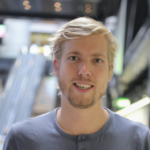Link to Pubmed [PMID] – 30456647
Curr. Genet. 2018 Nov;
In buddying yeast, like all eukaryotes examined so far, DNA replication is under temporal control, such that some origins fire early and some late during S phase. This replication timing program is established in G1 phase, where chromatin states are thought to prevent binding of key-limiting initiation factors at late-firing origins. Although many factors are involved in replication initiation, a new player, Rif1, has recently entered the scene, with a spate of papers revealing a global role for the protein in the control of replication initiation timing from yeasts to humans. Since budding yeast Rif1 was known to bind only to telomeric and silent mating loci regions, it remained controversial whether Rif1 acts directly at replication origins or instead influences origin activity indirectly. In this perspective, we discuss our recent finding that Rif1 binds directly to the replication origins that it controls. In this study, we also found that Rif1’s regulatory activity at origins is best revealed by an assay (sort-seq) that measures replication in unperturbed, freely cycling cultures, as opposed to commonly used protocols in which cells are first blocked in the G1 phase of the cell cycle by mating pheromone, then released into a synchronous S phase. Finally, we discuss how the sequestration of Rif1 at telomeres, through an interaction with the arrays of Rap1 molecules bound there, plays an important role in limiting Rif1’s action primarily to telomere-proximal replication origins.

